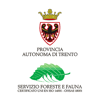Forest Pasture System Management – Italy
Active forest pasture management understood as supporting sustainable planning and management, guarantees the maintenance of multiple forest-pasture functions (e.g. economy, environment, biodiversity conservation and hazard protection).
Biogeographical Region
Mediterranean, South
Ecosystem Services
Water regulation, natural hazards protection, tourism and recreation
Initial Pioneer Innovations
Payment schemes
Innovation Stage
What is the innovation about?
Where the forest begins to disappear, when it reaches its natural altitude limit, the mountain gives way to herbaceous surfaces, large open areas that man has over the centuries learned to use as a space available for grazing livestock. In the Province of Trento, a wise management of the territory aimed at preventing the abandonment of mountains has ensured that areas between woodland and pasture became an uninterrupted continuum. In fact, the two environments blend together to become wooded pastures that can sustain both wood production and grazing. The innovation pursues an active forest-pasture management and is based on two preconditions. In the forest, the Province of Trento adopts a close-to-nature silviculture approach aiming to foster natural regeneration, to improve structure and composition, and to keep production levels constant over time, allowing the forest to provide other functions beyond the productive one. As part of the management of the pastures, it promotes livestock breeding in order to maintain the production activities related to the mountain grazing. Interventions of environmental improvement so far have varied according to interests (economic, biological-naturalistic, cultural, landscape) and objectives (woods, pastures).
What makes this innovation a good example?
This approach, which is based on supporting both the forestry chain and pasture management, makes sure mountain system as a combination of forest and pasture can provide a wide array of functions – production, protection, hunting, tourism, environment.
Where is the case study innovation located?
The study area is located in the Autonomous Province of Trento – Primiero, in northern Italy, on the border between Trentino and the Province of Belluno (Veneto), has a size of 413 sq. km, and includes a portion of the southern Dolomites. The area is surrounded by three mountain groups: the Lagorai to the west, the Vette Feltrine to the south, and the Pale di San Martino to the north. Rainfall, which averages 1200 mm per year (though figures are progressively rising) has its peak in the months of May and October-November, and its minimum in winter. The vegetation reflects both the characteristics of the physical environment such as climate, morphology of the slopes, soils, and the action of man, which has significantly modified the composition and structure of spontaneous vegetation.
Why was the innovation established?
The innovation was established to support a balanced coexistence of forest areas, meadows and pasture so that they can keep providing a wide array of ecosystem services.
Who is benefiting from the innovation?
All people that directly or indirectly live the mountain: land owners can improve the productivity of their forests and integrate forest management with the preservation of social functions, therefore reducing tensions; local people have a source of income and benefit from the indirect functions of the forest and the protection of the territory, therefore being less prone to abandon mountains; breeders have direct advantages from the active management of pastures, Etc.
Does the innovation need particular natural conditions to work? If so, what kind?
Continuous planning, which ensures a long-term perspective for the design of interventions, and local stakeholder involvement in decision-making, are crucial for maintenance of forest-pasture ecosystem functioning.
Does the innovation need particular forest management strategies to work? If so, what kind?
The main strategy is to invest and keep improving ecosystem functioning through continuous planning, which is based on a long-term perspective for the design of interventions on forest-pasture resources, ultimately guaranteeing greater efficiency.
Does the innovation need particular policies, stakeholder, or market conditions to work? If so, which one?
A good interaction between policies, stakeholder and market is key to making the innovation work. Active management is only possible if policies meet market demands. Under these circumstances, the innovation can adapt to the different needs of markets and stakeholders.
What are the main difficulties for the innovation to work?
Maintain a balance in the relationship among managers, local people and stakeholders in the long term and putting in place an effective communication strategy.
Where would you like to see the innovation in five years?
The project could help define mechanisms for supporting a balanced management in the supply of different goods and services and for enhancing benefits that forests they bring to society by promoting resource management based on a long-term vision.
How might InnoForESt help you in this endeavor?
Creating an effective platform to make managers and stakeholders meet and discuss on specific themes may further help consolidate, renew and expand the ongoing participative processes that are mirrored by positive management choices. The project can help us define priorities for action, understand which management indicators to use and design funding mechanisms that are suitable to support forest management and use without altering the market. InnoForESt could also help us develop modelling tools to simulate the effects of different management strategies on the provision of forest ecosystem services in the study area.
Is there more information on the innovation available?
Please visit:
- https://forestefauna.provincia.tn.it
- http://www.urbanistica.provincia.tn.it/fondo_paesaggio/pagina98.html
- https://www.legnotrentino.it/it/vendite-legname/
- https://forestefauna.provincia.tn.it/Pubblicazioni-e-progetti/Progetti/Progetto-InnoForESt
- Twitter: @TrentinoForest and Instagram: servizio_foreste_trentino

















